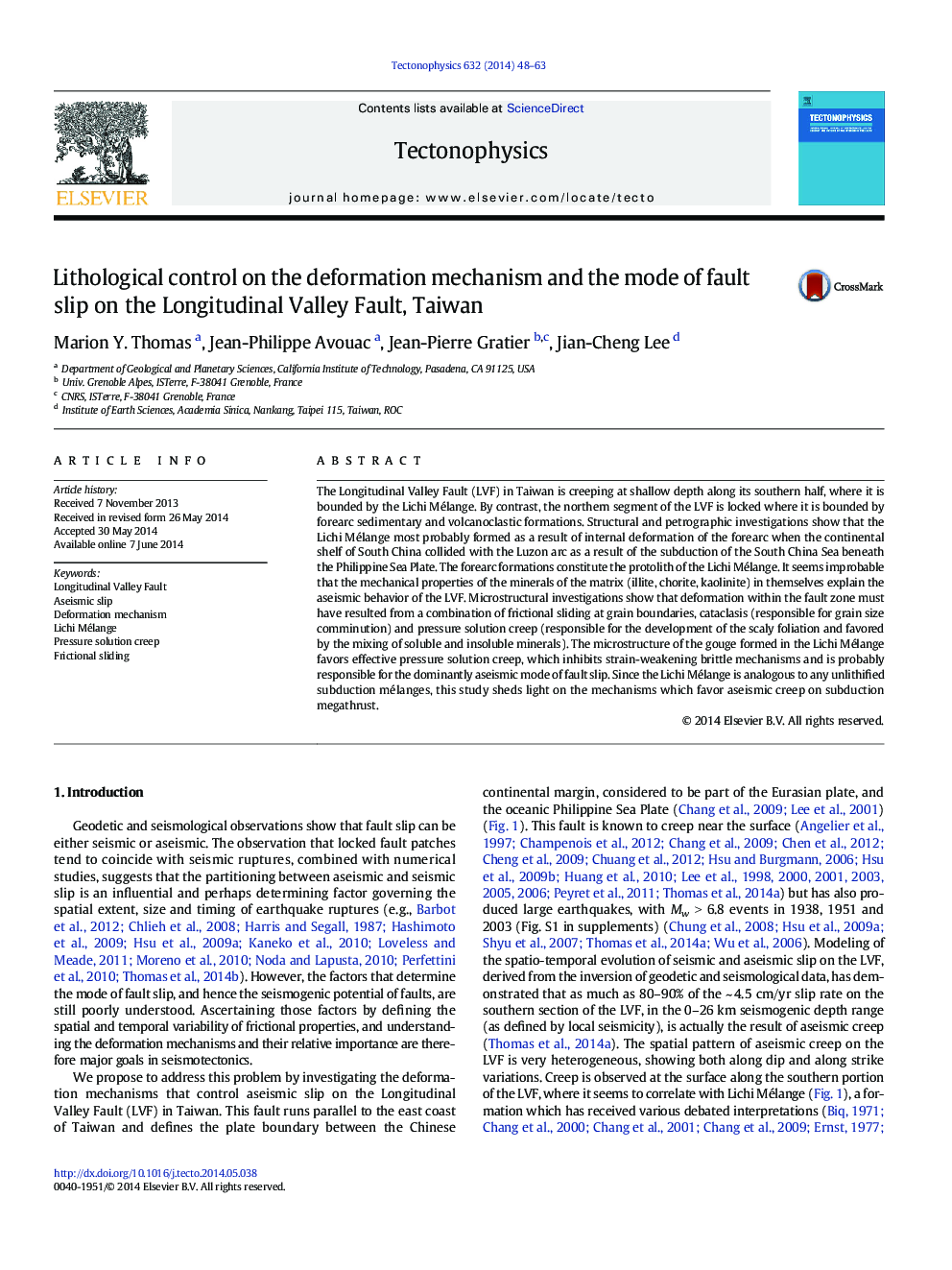| کد مقاله | کد نشریه | سال انتشار | مقاله انگلیسی | نسخه تمام متن |
|---|---|---|---|---|
| 4691849 | 1636759 | 2014 | 16 صفحه PDF | دانلود رایگان |
• Lithology controls the mode of slip on the Longitudinal Valley Fault (LVF).
• The collision Lichi Melange clearly promotes aseismic creep.
• The Lichi Melange likely formed as a result of internal deformation of the forearc.
• Fault zone fabric, rather than minerals content, control the creep on the LVF.
• Frictional sliding and pressure-solution creep accommodate the creep on the LVF.
The Longitudinal Valley Fault (LVF) in Taiwan is creeping at shallow depth along its southern half, where it is bounded by the Lichi Mélange. By contrast, the northern segment of the LVF is locked where it is bounded by forearc sedimentary and volcanoclastic formations. Structural and petrographic investigations show that the Lichi Mélange most probably formed as a result of internal deformation of the forearc when the continental shelf of South China collided with the Luzon arc as a result of the subduction of the South China Sea beneath the Philippine Sea Plate. The forearc formations constitute the protolith of the Lichi Mélange. It seems improbable that the mechanical properties of the minerals of the matrix (illite, chorite, kaolinite) in themselves explain the aseismic behavior of the LVF. Microstructural investigations show that deformation within the fault zone must have resulted from a combination of frictional sliding at grain boundaries, cataclasis (responsible for grain size comminution) and pressure solution creep (responsible for the development of the scaly foliation and favored by the mixing of soluble and insoluble minerals). The microstructure of the gouge formed in the Lichi Mélange favors effective pressure solution creep, which inhibits strain-weakening brittle mechanisms and is probably responsible for the dominantly aseismic mode of fault slip. Since the Lichi Mélange is analogous to any unlithified subduction mélanges, this study sheds light on the mechanisms which favor aseismic creep on subduction megathrust.
Journal: Tectonophysics - Volume 632, 29 September 2014, Pages 48–63
